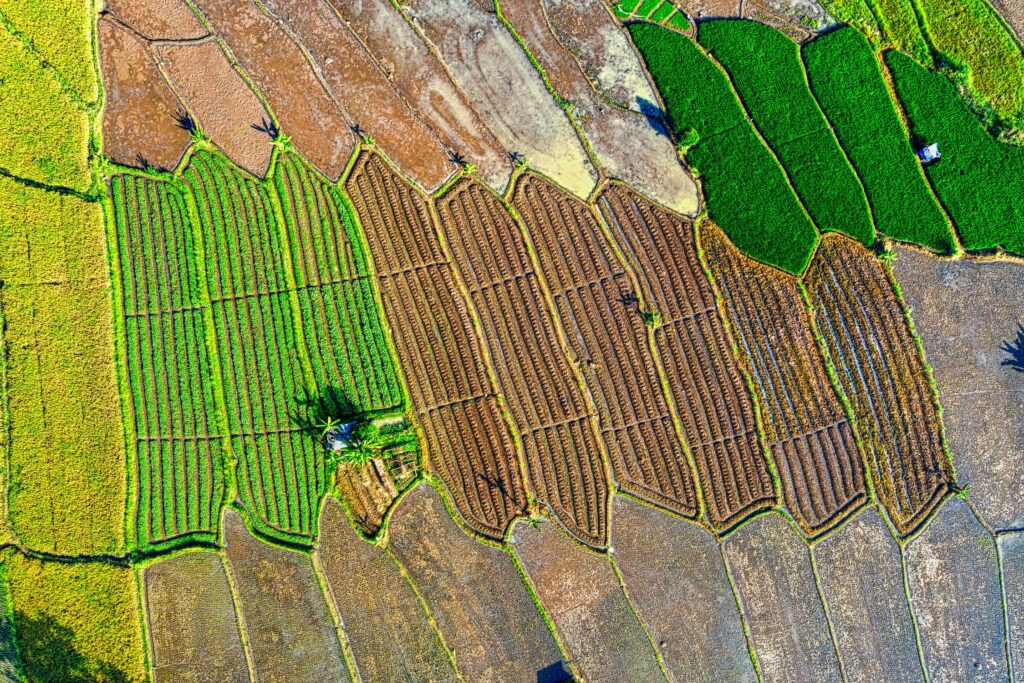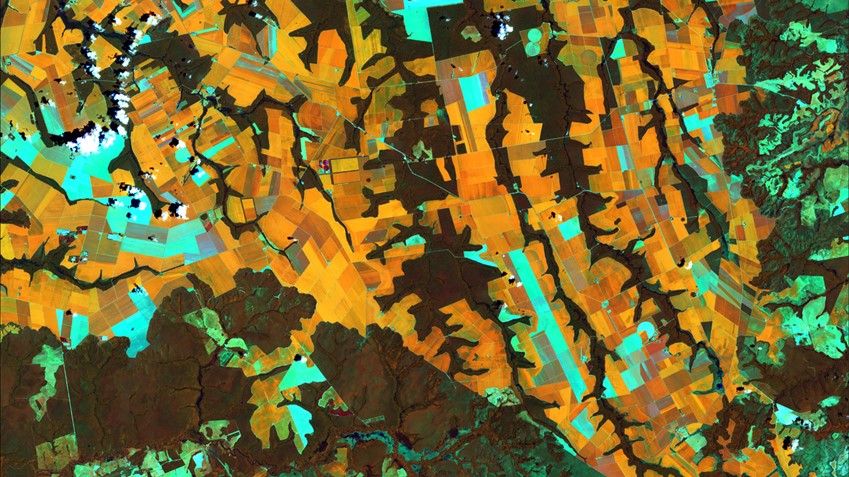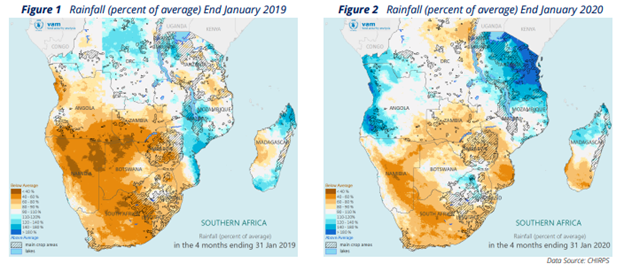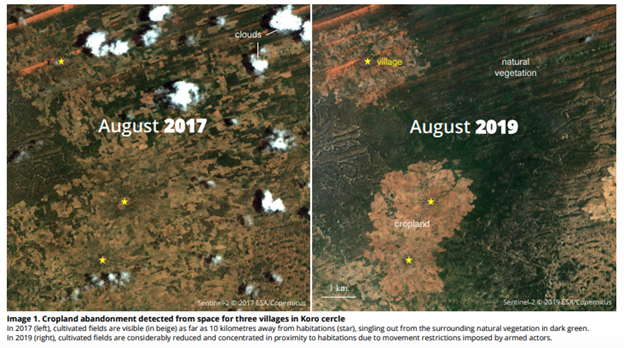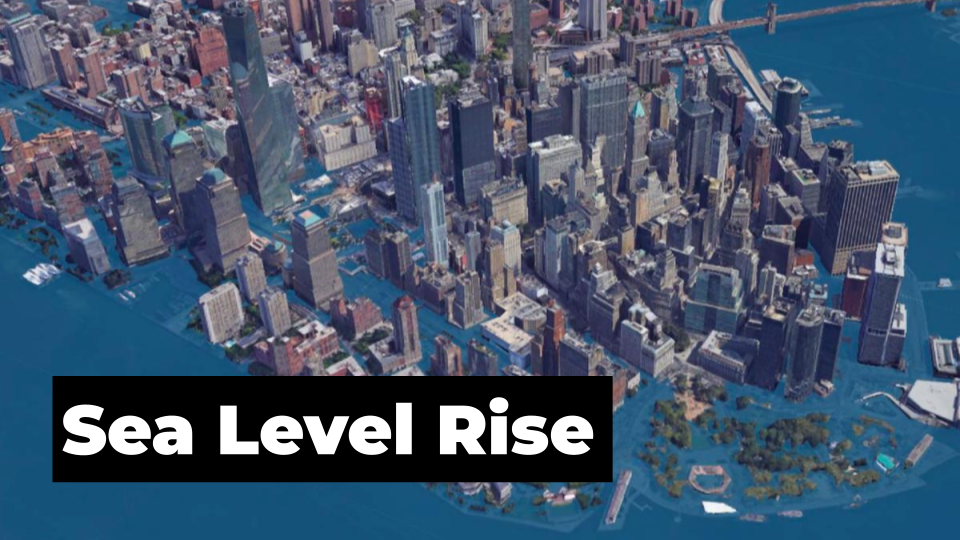
How satellite data is used to understand sea level rise
Editor’s note: This article was written as part of EO Hub – a journalistic collaboration between UP42 and Geoawesomeness. Created for policymakers, decision-makers, geospatial experts and enthusiasts alike, EO Hub is a key resource for anyone trying to understand how Earth observation is transforming our world. Read more about EO Hub here.
Unfortunately, the world’s sea level is constantly rising. This is not due to a single cause, but is influenced by many factors, including intense consumption of stored water. Factors such as loss of wetlands and deforestation are crucial to the sustained flow of water into the oceans from constructed artificial reservoirs. As an example, let’s consider the situation in the Aral Sea region. Water consumption in agriculture is so high that it has lowered the level of stored water in reservoirs, consistently raising the sea level. Changes in land movement caused by the subsidence of the earth’s crust are also a contributing factor. Rising tectonic plates will also inevitably raise the sea level. However, this process occurs on large time scales and is very slow. Scientists surveying areas in Florida have estimated that the land near coastlines has been rising at a rate of 0.02 to 0.05 mm per year over the past 1.6 million years.
There is no doubt that the main reason for rising sea levels is the warming of the oceans caused by climate change. As water molecules absorb heat, they increase in size (thermal expansion) and eventually cause the oceans themselves to become larger, and sea levels to rise. Another effect of global warming is the melting of glaciers, which return water to seas and oceans, thus leading to their expansion. Scientists are now carefully studying the ice caps, and estimate that melting ice contributes 0.35 mm per year to rising sea levels. To better show the scale, it is worth mentioning that if the ice caps melted completely, the level of the oceans would rise by about five meters from the West Antarctic ice sheet, 7 meters from the Greenland ice sheet, and 53 meters from the East Antarctic ice sheet!
Satellites have been recording the height of the ocean surface since 1992. Since then, according to NASA, the average sea level has risen by 10.1 cm. In addition, the rate of the increase in the sea level continues to rise. In the 20th century the sea level increased by 1.5 mm per year; in the early 1990s it was 2.5 mm per year, but in the last decade it has accelerated to as much as 3.9 mm per year! According to NASA, every 2.5 cm rise in sea level results in the loss of 2.5 m of coastline.
Unfortunately, a 30-year study shows just how much man is to blame for this situation. In the words of Josh Willis, a NASA oceanographer, “Sea level rise caused by human interference with climate is now eclipsing natural cycles… and it’s happening faster and faster every decade.” The truth is that the human impact is 10 times greater than the natural rise in sea level, and much depends on us. The Intergovernmental Panel on Climate Change predicts that sea levels could rise by as much as 1.1 meters by the end of this century.
The chart below shows the upward trend of global average sea levels and future projections.
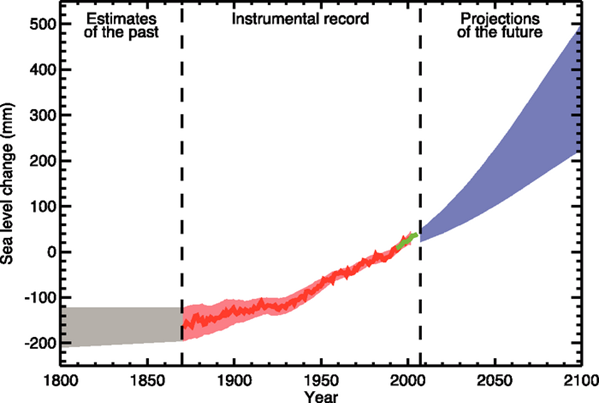
Time series of global mean sea level in the past and future. Source: Intergovernmental Panel on Climate Change (IPCC)
If we consider the history of our planet, we can see that the sea level has risen and fallen many times in the past. The cause was mainly natural processes, tectonic movements and climate warming. However, the stakes have never been so high, and the Earth has never been so heavily populated.
Rising sea levels are already having catastrophic consequences. We can see these with the naked eye by looking at coastal flooding and shrinking beaches. Some countries, such as Bangladesh, are losing crop species due to sea water polluted land. For coastal communities, the situation poses a danger in the form of erosion, storms and flooding.
In addition, many major megacities, home to billions of people, are located right on the coast. Shanghai, New York and London are just some examples of heavily urbanized cities that are potentially at risk. The example of an interactive visualization by Landscape Metrics illustrates what this means for a city’s residents and infrastructure.
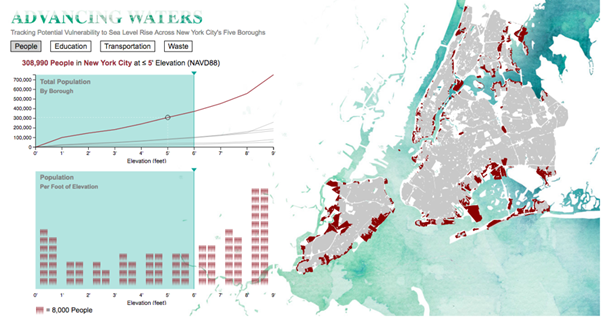
The situation poses an even greater risk to smaller islands, where people have limited space to relocate. The main center of life is located on the coast, where flooding equals a major disaster.
Satellite data forecasts a warning scenario
It is an indisputable fact that there is no better method to observe the big blue ocean than through satellites orbiting the earth. Water covers 70% of our planet, and getting the same information at the same time from the surface is impossible. With satellite data, we can see the extent of changes over time, and we can thus prepare for the effects. Maps and analyses generated from satellite images make it clear how serious the problem of rising water levels is, and how quickly we can feel the consequences. The changes are happening right now, and it is necessary to take action to minimize the potential damage.
Surging Seas Global Risk Zone Map
The predicted breakup of the ice caps will lead to at least a meter of acceleration in global sea level rise over the next two centuries, and at least a three-meter rise at the end. Ever wondered what your city will look like in such a scenario? Climate Central has created a Surging Seas Global Risk Zone Map that allows you to study the risk of flooding up to 30 meters along the world’s coasts. The map can be searched by city, state, zip code and other location criteria. For areas of the United States, the map includes the latest high-accuracy, high-resolution LiDAR data provided by NOAA. In addition, the layers include information showing social vulnerability and population density. However, for areas outside the United States, altitude data from NASA’s Shuttle Radar Topography Mission (SRTM) was used. The visualizations presented in the app provide thought-provoking insights, which help us better understand the impact of rising water levels on our lives.
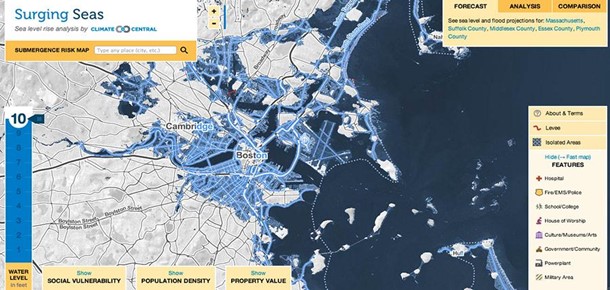
Boston projections showing water level 3 meters above the high tide line; Source: https://riskfinder.climatecentral.org/
Vulnerability to sea level rise in the tropics
According to a recent article published in Nature Communications, 267 million people live on land less than two meters above sea level. The study used a remote sensing method called LiDAR, which uses light in the form of a pulsed laser to measure the distance to an object. These light pulses, combined with other data recorded by the system, generate precise, three-dimensional information about the studied object’s shape. Based on the results, the researchers predicted that, if the rise in sea level is one meter and the population remains the same, then by 2100 the number of people at risk will increase by more than 140 million! According to the maps presented in the article, 62% of the most vulnerable land is located in the tropics. Unfortunately, the forecasts are not optimistic and assume that 59% of the population is at risk in tropical Asia, and as much as 72% in the tropics!
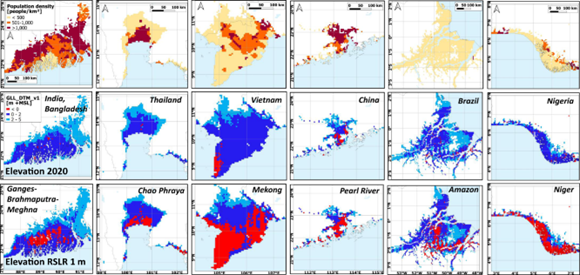
(Top) Population in 2020 (middle) land surface elevation in 2020 (bottom) land surface elevation after 1 m relative sea-level rise (RSLR); Source: Hooijer, A., Vernimmen, R. Global LiDAR land elevation data reveal greatest sea-level rise vulnerability in the tropics.
But with measurable data, more parts of the world can better plan for rising seas, and take thoughtful steps to protect disaster-prone areas. According to Dr. Aljosji Hooijer, lead author of the study, “As long as there’s not really good data on the table, you cannot have a proper discussion about that, but nowadays, data is there, and the accuracy is much higher.” LiDAR technology has theoretically existed since the 1960s, but has evolved considerably in recent years, and survey results are much more accurate. Hooijer was able to use terrain elevation measurements around the world with a much smaller margin of error. Today, data and processing functions are accessible to everyone on geospatial platforms such as UP42. Technology, data quality and the geospatial market are constantly evolving, which allows for even more investigative research.
The Baltic SEAL
The usefulness of satellite data in better understanding the changes taking place is also confirmed by an ESA project called the Baltic SEAL. A group of scientists from the Technical University of Munich, in cooperation with partners from around the world, set out to develop algorithms to work with data on water level changes.
The researchers chose the Baltic Sea as a model region for the study. “Data from this region works exceptionally well for developing new methods to analyze them, because many factors – such as the winding coastline, sea surface ice and wind – make analysis complicated. In addition, there are many local sea level measurements needed to confirm the results,” said Marcello Passaro, project lead. “The method that works for the Baltic Sea will be easily adaptable for other regions.”
With the availability of the aforementioned algorithms, it will be possible to plan a preventive strategy in the event that parts of the coast are inundated. The new way of processing satellite data will make it possible to determine sea levels by the millimeter each year. In the current situation, if the water level continues to rise at such a rapid pace, the information obtained in advance will provide a valuable guide for decision-making bodies in planning and taking action.
Conclusions
Thus, as can be seen from the Baltic Sea, as well as other examples, satellite data has a number of applications related to rising sea levels. With the use of advanced algorithms and LiDAR data, we can track sea and ocean levels. Consequently, what we know is the scale of threats and where potential threats may occur. In addition, awareness of the situation allows for early warning and preventive action based on advanced models created using satellite data. This provides us with an awareness of the problem, shows how the map of threats is spread, and how we should react and cooperate in a possible response.
Without the use of specialized instruments, it is not possible to accurately and quickly investigate the phenomenon described. Even if we fail to stop the rise of ocean waters, we will be prepared for the possible consequences. This is what precise and reliable satellite data enables.
Did you like the article? Read more and subscribe to our monthly newsletter!




